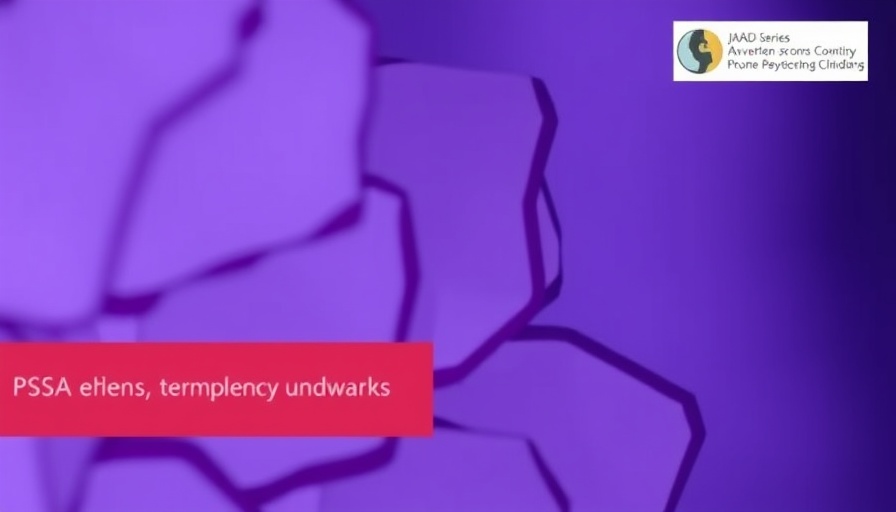
Understanding Mycosis Fungoides: A Rare Skin Condition in Children
For many parents, the world of pediatric dermatology can feel overwhelming, especially when encountering a rare skin condition like mycosis fungoides. Often characterized as a slow-growing type of skin lymphoma, mycosis fungoides can pose significant challenges in diagnosis and treatment. Recent recommendations, particularly emphasized in the ARMFUL study, aim to guide healthcare professionals in managing such cases with a consensus-based approach.
What Makes Mycosis Fungoides Different?
Mycosis fungoides tends to present itself subtly—often mistaken for more common skin issues such as eczema or psoriasis. Children may experience patches of dry skin that don't respond well to typical treatments. Understanding the nature of this condition is crucial. It primarily affects T-cells, a type of white blood cell, and may also manifest as irregular rashes and lesions over time. The delayed diagnosis can lead to emotional stress for both the children and parents, making awareness critical.
Why Consensus-Based Recommendations Matter
The ARMFUL study brings together experts from various fields to create a consensus on how best to approach mycosis fungoides in children. These recommendations are designed to streamline the diagnostic and treatment process, ensuring children receive the most effective care possible. The consensus emphasizes the need for thorough examinations, including skin biopsies, and highlights the importance of early intervention.
Practical Tips for Parents
If you're a parent whose child has been diagnosed with this condition, knowledge is your best ally. Stay informed about the latest treatment options, including topical therapies and light treatments, which have shown promise in managing symptoms. Connecting with support groups, whether online or in your community, can also help mitigate the feelings of isolation during this journey.
Real Stories: Coping with Mycosis Fungoides
Hearing stories from other families can be incredibly empowering. For instance, one mother shared how she navigated the diagnosis process with her son and found strength in community support. Others have benefited from sharing their experiences on social media, creating a virtual space where they can exchange tips and find reassurance as they tackle similar challenges.
Future Insights: What Lies Ahead
With ongoing research in pediatric dermatology, new treatments and technologies are continually emerging. Innovations such as targeted therapies and immunotherapies could provide cutting-edge alternatives to traditional methods. Awareness campaigns are also essential in helping recognize the early signs of mycosis fungoides, making it easier for parents to seek timely medical advice.
The Importance of Advocacy
As discussions surrounding rare diseases grow, patient advocacy becomes crucial. Engaging with healthcare professionals, participating in awareness programs, and sharing your voice can bring attention to conditions like mycosis fungoides. Your experiences as a parent can help reshape the conversation and improve resources available for other families.
Call to Action: Join the Community
As more information emerges about rare skin conditions like mycosis fungoides, it’s vital to stay connected. Join online forums or local support groups to share knowledge, ask questions, and build a support network. Together, we can raise awareness and improve the journey for children diagnosed with this condition.
 Add Row
Add Row  Add
Add 




Write A Comment